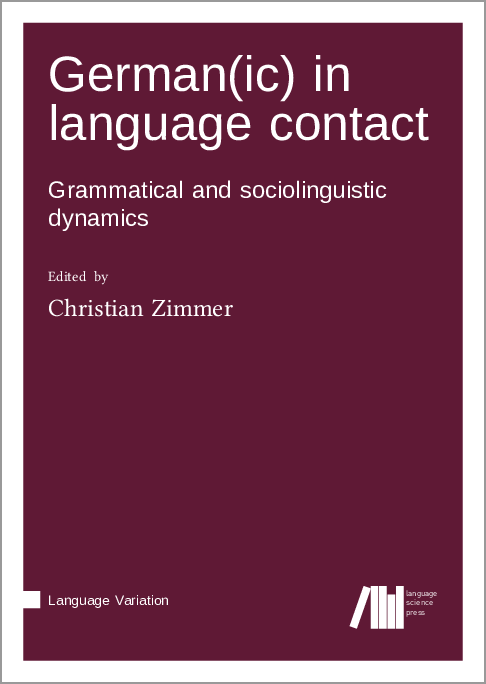We log anonymous usage statistics. Please read the privacy information for details.
German(ic) in language contact: Grammatical and sociolinguistic dynamics
Synopsis
It is well-known that contact between speakers of different languages or varieties leads to dynamics in many respects. From a grammatical perspective, especially contact between closely related languages/varieties fosters contact-induced innovations. The evaluation of such innovations reveals speakers’ attitudes and is in turn an important aspect of the sociolinguistic dynamics linked to language contact. In this volume, we assemble studies on such settings where typologically congruent languages are in contact, i.e. language contact within the Germanic branch of the Indo-European language family. Languages involved include Afrikaans, Danish, English, Frisian, (Low and High) German, and Yiddish. The main focus is on constellations where a variety of German is involved (which is why we use the term ‘German(ic)’ in this book).
So far, studies on language contact with Germanic varieties have often been separated according to the different migration scenarios at hand, which resulted in somewhat different research traditions. For example, the so-called Sprachinselforschung (research on ‘language islands’) has mainly been concerned with settings caused by emigration from the continuous German-speaking area in Central Europe to locations in Central and Eastern Europe and overseas, thus resulting in some variety of German abroad. However, from a linguistic point of view it does not seem to be necessary to distinguish categorically between contact scenarios within and outside of Central Europe if one thoroughly considers the impact of sociolinguistic circumstances, including the ecology of the languages involved (such as, for instance, German being the majority language and the monolingual habitus prevailing in Germany, but completely different constellations elsewhere). Therefore, we focus on language contact as such in this book, not on specific migration scenarios. Accordingly, this volume includes chapters on language contact within and outside of (Central) Europe. In addition, the settings studied differ as regards the composition and the vitality of the languages involved. The individual chapters view language contact from a grammar-theoretical perspective, focus on lesser studied contact settings (e.g. German in Namibia), make use of new corpus linguistic resources, analyse data quantitatively, study language contact phenomena in computer-mediated communication, and/or focus on the interplay of language use and language attitudes or ideologies. These different approaches and the diversity of the scenarios allow us to study many different aspects of the dynamics induced by language contact. With this volume, we hope to exploit this potential in order to shed some new light on the interplay of language contact, variation and change, and the concomitant sociolinguistic dynamics. Particularly, we hope to contribute to a better understanding of closely related varieties in contact.
Chapters
-
Contact settings involving Germanic languages
-
Grammatical arealisms across the Danish- German border from a constructional perspective
-
Outcomes of language contact in New York Hasidic Yiddish
-
Northern German in Southern Africa?On the phonology of Namdeutsch
-
Namibian German and genderA corpus study on the use of transferred lexical items
-
Language contact and mixed-mode communicationOn ingroup construction through multilingualism among the German-Namibian diaspora
-
Assessing language contactLinguistic purism and North Frisian
-
East Frisians "achter de Penn"Language and identity in correspondences to a German newspaper in America




